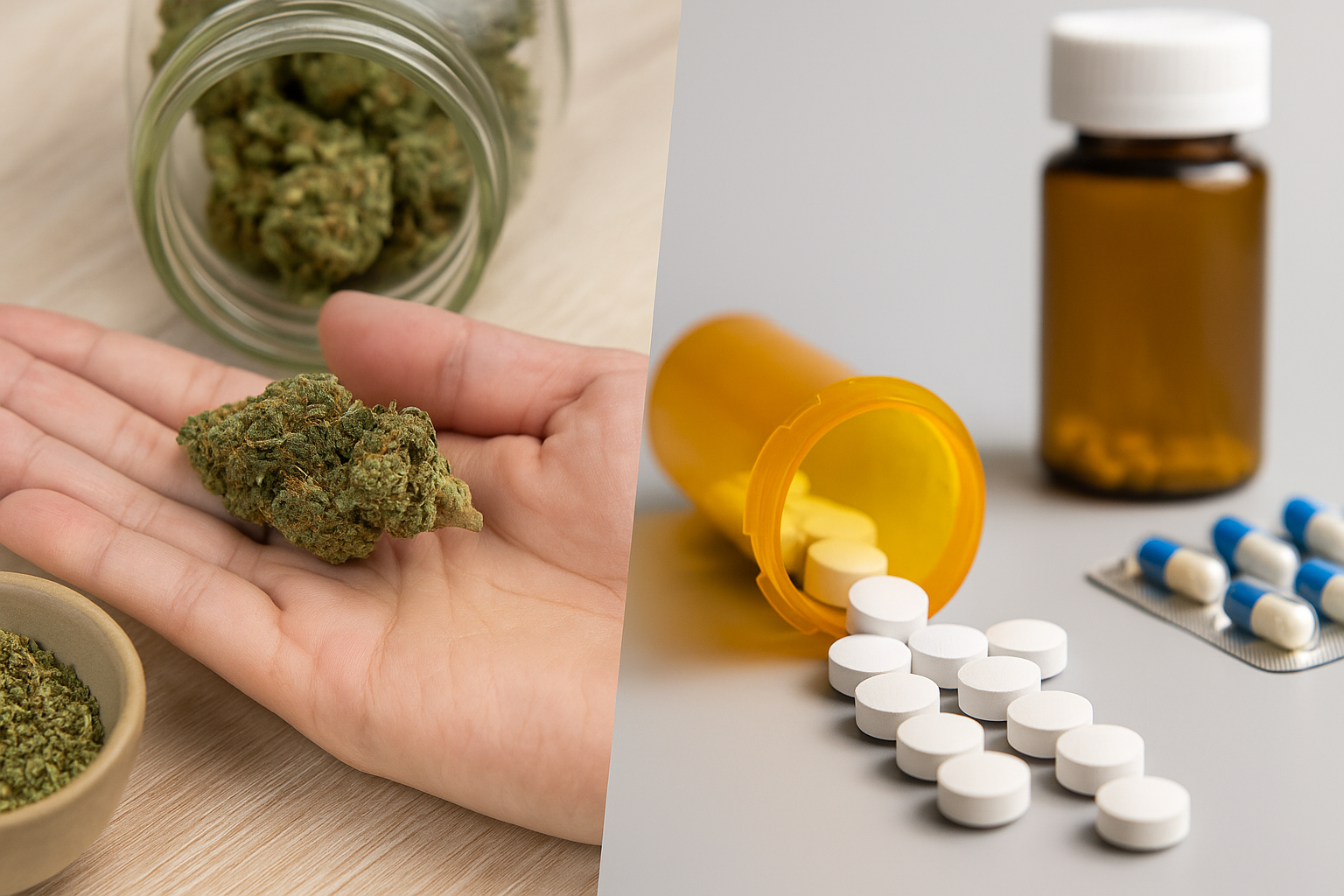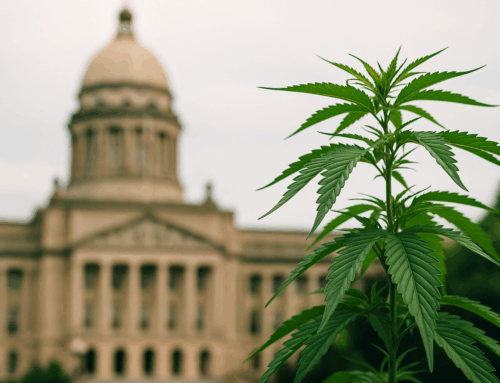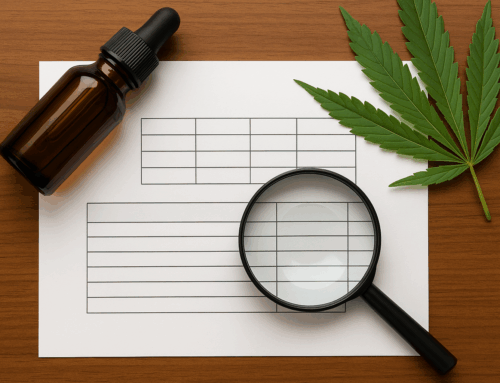You’re here because you hurt. You’re here because you’ve searched some variation on this question into a late-night web search, when the house is empty and the whole weight of simply being alive is more than you can bear. You need a lifeline. And what you find is a combination of mutually exclusive solutions, the antiseptic, muted certainty of a doctor’s waiting room on the one hand, and the fervid, whispered breath of women and online bulletin boards on the other. One, a slow, incremental, step-by-step rebuilding towards something like its previous self. The other, a faster, but very different, more volatile, transfiguration of what you experience of the world. So, Let’s refrain from determining a “winner” and talk plainly about what exactly each of these events asks of you.
The Pharmaceutical Promise: A Quiet, Padded Room
Let’s start with antidepressants. The essence of the promise there is one of quiet. Stability. If your mind is a constant, turbulent storm of self-blame, fear, and a thick, crushing dread, the concept of a motionless, soundproof room is heaven. That is the implicit promise of the drug path. A physician, with clinical information in hand, hands you a key a humble, little pill and the promise that if you simply take it, every day, you may one day find yourself sitting in that peaceful room, and the screaming winds of your mind finally stilled.
It’s a long lesson in waiting and trust. It requires relinquishing a level of control and trusting in the gradual, invisible hand of chemistry. You’re handing over the keys to your brain, the seat of you, hoping that a slow rebalancing of neurotransmitters will get you back on firm ground. For millions, it does. It isn’t always easy there’s almost always that pesky wait time and a testing of early side effects but it concludes with relief. The door opens on that quiet room, and that nagging, wailing noise of their disease is finally gone. They have the stability again to hold a job, sit with their family, just be there without a chronic, debilitating inner struggle.
But there’s a price for living in a room that’s just too quiet. In stifling the storm, you sometimes drown out the other beautiful sounds of life. That rich, swelling orchestra of simple pleasure, the growl of creative fire, the laugh that makes your gut hurt and your eyes tear up all of that can sound distant, like it’s on the other side of a thick, glass wall. The room is safe, definitely. But it can also be isolating. You’re protected from the sharpest points of your pain, but you might also lose the beautiful, messy, highly textured tapestry of a whole life. Not experiencing pain, you find, isn’t necessarily the same thing as experiencing joy. That’s the compromise: for safety from the debilitating lows, you might have to forgo the brilliance of the highs.
The Natural Alternative: The Open, Wild Cannabis Field
And now, let us go on the other trail, the one leading towards what best might be called a vast, arbitrary, and unruly field. While antidepressants give you a silent room, cannabis gives you the very opposite. It does not promise to calm the storm. It guarantees changing your relationship with it to know how to dance during the rain, or even fly on the currents.
The best part about cannabis is the immediacy and the powerful sense of mastery that it affords. You’re not flipping out, waiting weeks for something to happen while a drug builds up inside you; you are doing it yourself, at least on a limited level. The effects aren’t something that happens way down the road; they’re a direct, tangible experience that happens under your own eyes. This path goes through your body’s own endocannabinoid system, an older, extremely sophisticated apparatus that helps regulate almost everything that matters: mood, sleep, stress, and appetite. You are not working against a malfunctioning system; you are working with it. You are joining with your body, not doing a number on it.
This can be an amazingly intoxicating type of freedom. You’re the curator of your own mind. You can discover how to select a particular strain with a certain set of cannabinoids and terpenes to suit the special weather within your head at any particular time. A mild, CBD-dominant strain may dispel the stifling haze of morning anxiety. A mood-uplifting sativa may be what gets you going to overcome the weighty lethargy of depression. You’re no longer just a patient; you’re an explorer, learning the intricate terrain of your own consciousness. For many, that act of self-reliance is a powerful medicine in itself.
But a wild field has no fences. That liberty to experience everything once more entails you’re also vulnerable to the thorns, the concealed ditches, and the unexpected, horrific thunderstorms of paranoia and fear that the incorrect strain or excessive dose might trigger. This journey isn’t edited or uniform. The equipment is not standardized as drugs are. You are 100% in charge of your own wayfinding, and it’s grotesquely simple to become lost. This route requires ongoing awareness, a whole lot of research, and a hard-nosed friendship with your own limitations.
The Right Question: What Are You Going to Give Up?
So let’s ditch the meaningless question of “which is best.” A more authentic, exposed, and helpful question is this: What am I willing to trade for my peace of mind?
Because there is always a trade involved.
The treatment with antidepressants might force you to trade the rich high points and low points of your emotional life for a firm, stable plateau. You might be trading richness for dullness, short-term mastery for ultimate stability.
The cannabis regimen might invite you to trade the certainty of a clinically established regimen for the exhilarating, if necessarily perilous, freedom of self-treatment. You might be trading routines for tastes the sanatorium room for the open plain.
The correct response for you only hinges on where you happen to be. Are you in a situation so chaotic, so frayed, that the security of a quiet, unmoving, padded room is the kindest and most essential thing that you can do for yourself? Then the organized care of an antidepressant, with a doctor’s oversight, could be the most prudent place to begin.
Or are you resilient enough to stand, but simply desperate for the warmth of the sun on your skin again, to experience anything deeply? Are you prepared to risk a few potential storms in exchange for regaining the simple joy of skipping through a clear pasture? Then the experiential, active encounter with cannabis might be the path you need to take.
Conclusion
This isn’t a sentence for the rest of life. The goal isn’t to go find a room or a corner and stay there for the duration. The goal is to heal. And healing is a dynamic, evolving process. You might need the protection of the room to temper your strength, mend your sails, and learn to breathe again. And then, when you’re strong enough, you might have the strength to lift the latch and step out again, armed with new information, to see if you’re ready to encounter the weather once more.
Whatever you do, for the love of all things, don’t make this path alone. This path is too important. Go get a doc, a therapist, a mental health professional who knows somebody who can help you through the deep complexities of your own brain without judgment. The actual healing does not even commence when you make a choice concerning a pill or a herb. It commences when you make the choice, despite all odds, to heal your own body.





